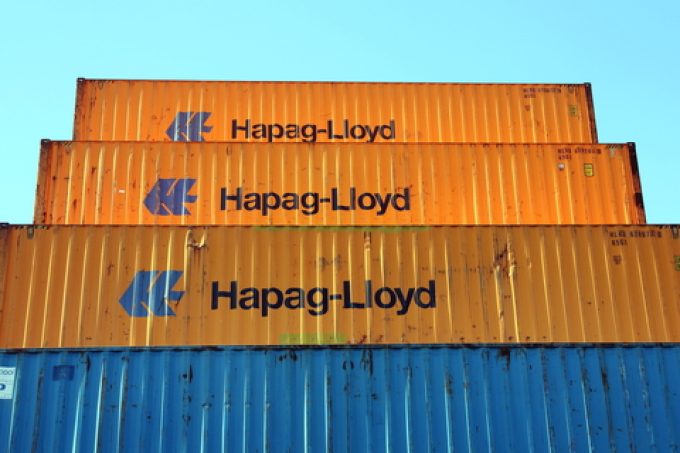Container spot rates have peaked as all major trades see prices fall
There was more evidence in this week’s container port freight markets that peak prices on ...
TFII: SOLID AS USUALMAERSK: WEAKENINGF: FALLING OFF A CLIFFAAPL: 'BOTTLENECK IN MAINLAND CHINA'AAPL: CHINA TRENDSDHL: GROWTH CAPEXR: ANOTHER SOLID DELIVERYMFT: HERE COMES THE FALLDSV: LOOK AT SCHENKER PERFORMANCEUPS: A WAVE OF DOWNGRADES DSV: BARGAIN BINKNX: EARNINGS OUTODFL: RISING AND FALLING AND THEN RISING
TFII: SOLID AS USUALMAERSK: WEAKENINGF: FALLING OFF A CLIFFAAPL: 'BOTTLENECK IN MAINLAND CHINA'AAPL: CHINA TRENDSDHL: GROWTH CAPEXR: ANOTHER SOLID DELIVERYMFT: HERE COMES THE FALLDSV: LOOK AT SCHENKER PERFORMANCEUPS: A WAVE OF DOWNGRADES DSV: BARGAIN BINKNX: EARNINGS OUTODFL: RISING AND FALLING AND THEN RISING

Standard & Poor’s (S&P) have upgraded their credit ratings for ocean carriers Hapag-Lloyd and CMA CGM ahead of expected bumper third-quarter earnings for the container line sector.
Hapag-Lloyd’s rating is up by one notch, from ‘B+’ to ‘BB-’, with a ‘positive’ outlook, the highest rating assigned to the carrier since 2010.
S&P said it expected Hapag-Lloyd to continue its solid performance, with a strengthened cash flow and reduced debt, resulting in “stronger-than-expected credit metrics”.
Hapag-Lloyd chief financial officer Mark Frese said: “We are very pleased that our earnings performance and our consistent cost management as well as our deleveraging efforts are positively recognised with this S&P rating action.”
Hapag-Lloyd delivered a net profit of $287m in the second quarter. According to Alphaliner analysis, it achieved the second-highest operating margin of the top ten carriers, at 11.7%, after Evergreen’s 12% ebitda margin.
Meanwhile, the ratings agency has revised its ‘B+’ outlook for CMA CGM from ‘negative’ to ‘positive’.
“We expect CMA CGM to report a significantly higher ebitda in 2020, due to a less-severe decline in global trade volumes than previously forecast, stringent capacity deployment by container lines, lower-than-expected bunker fuel prices and CMA CGM’s effective measures to steadily reduce costs,” said S&P.
It added that the ‘positive’ outlook rating reflected a “one-in-three likelihood that we would upgrade CMA CGM over the next 12 months”, but warned it would “need to be convinced that the management’s financial policy does not allow for significant increases in leverage”.
“This means that the company will not embark on any unexpected debt-financed fleet expansion or mergers and acquisitions,” said S&P.
CMA CGM recorded a second-quarter net profit of $136m and an operating margin of 9.3%, the fourth-highest of its liner peers.
But despite the spectacular reversal of container line fortunes during the pandemic, investment bankers remain cautious about its sustainability. For example, Nordea’s recent updated analysis for Maersk questioned whether the industry’s focus on profitability would be maintained “when carriers are no longer staring into the abyss”.
It added: “Simultaneously, their customers’ willingness to pay may decrease when there is less turbulence in supply chains.”
Nordea said it “needed more evidence that the industry had changed for the better”, with its guidance for Maersk remaining as ‘hold’.
“Since the industry’s track record is not very good at all, we think the risk/reward is so-so,” said the report.
Elsewhere, Jefferies was more positive on its sustainability outlook, upgrading Maersk to ‘buy’.
“The stars are aligning for container shipping; historic consolidation, rational capacity management and now a fast bounce-back in demand post-lockdown,” said the upbeat analysis. “Rates are pushing to record highs, driving margins and returns higher. We think Q4 – normally seasonally weaker – will see more strong results.”
Maersk recorded a market-highest net profit of $443m for the second quarter, but lagged behind six of its competitors with its operating margin of 8.3%.
Nevertheless, analysts expect the Danish transport and logistics group to upgrade its 2020 ebitda estimate from the current $6-7bn on or before the publication of its third-quarter results on 18 November.
Comment on this article